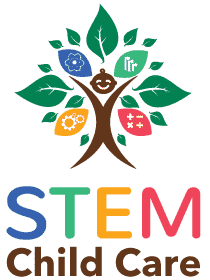Math: An Essential Skillset For Your Child
Math skills in early childhood form the foundation for later success in school and life. Educators should focus on basic skills that will lead to advanced math in the future. Simple math concepts and terms should be introduced by age three.
Introducing these concepts early prepares children to discuss and apply them in class. Even though preschoolers aren’t ready for traditional math, they can grasp basic ideas by practicing math language and seeing how it fits into daily life.
STEM Child Care
At STEM Child Care, we teach math through fun activities. We introduce number sense, where children learn numbers through pictures and objects. This helps prevent the “not good at math” mindset. Before kindergarten, children should understand number sense, counting forwards and backwards, and how numbers relate to objects.
Our teachers focus on helping children see numbers visually, using items like fruits, animals, or family members. This helps them learn counting and understand what numbers represent. We also introduce basic addition and subtraction with engaging, age-appropriate activities to build a strong math foundation.
STEM Child Care – Creating Passionate Lifelong Learners. Enroll Today.








